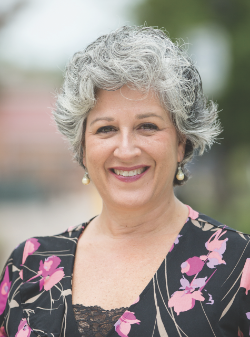
Wygal Hall, Longwood’s music building, opened in 1968. At that time, the Department of Music offered only studies in choral music and piano. When I think about it, I can’t imagine how Wygal met the needs of the students, faculty and community even then.
Fast forward to 2019. The music program has grown and thrived, serving close to 70 majors and hundreds of other students taking classes and participating in ensembles such as the Wind Symphony, Jazz Ensemble or Camerata Singers. The department is home base for some of Longwood’s best and brightest faculty, all of them gifted musicians in their own right. These dedicated professors have furthered the department’s rich history of excellence in teacher preparation, making it a veritable fount for music educators.
I’ve been a member of the music faculty at Longwood for 23 years, and I can’t remember a time when my husband, Charlie, also a music faculty member, and I were not discussing the importance of improving or rebuilding our teaching and performing facility.
But these days we’re talking about something else.
We’re talking about a new music building with state-of-the-art equipment—from Smartboards to Boomwhackers—that will help prepare music teachers for today’s classrooms. We’re talking about sound insulation in each teaching, rehearsal, practice and performance space that will prevent sound from bleeding room to room and floor to floor. We’re talking about a 500-seat concert hall that will be easily accessible to the campus and the community.
Thanks to the work of President W. Taylor Reveley IV and others, the General Assembly recently authorized the development of detailed architectural planning for a new music building, which is, in the workings of state government, the critical first stage of a construction project.
As the current chair of the music department, I am giddy with anticipation!
A feasibility study conducted in 2016-17 yielded teasing images of a structure that will grace our campus and enrich the lives of so many. A team of professionals that included acousticians, mechanical systems specialists and architects laid out specifications for a facility that will deliver in every way. These experts sought input from all of the relevant constituents to ensure that the distinctive requirements of a music program will be met, and for that I am profoundly grateful.
Because more than half of Longwood’s music majors are studying to become music educators, it is essential that our classrooms reflect modern, often more modular teaching environments, and are outfitted with up-to-date equipment. When our alumni who are now teaching were asked to identify areas for improvement at Longwood, the overwhelming response was related to contact with state-of-the-art classrooms outfitted with current music technology.
The new building will have sound insulation for effective music study, blocking noise from outside and from the building’s own mechanical system, as well as containing sound within adjacent rooms. That’s not the case in Wygal, whose hollow cinderblock walls actually carry the sound throughout the building. Imagine Led Zeppelin’s Black Dog blaring from a History of Rock class into a practice room where a flute student is trying to perfect the Fauré Fantasie.
The facility will also contain multiple rehearsal spaces that will be designed specifically to accommodate choral and instrumental ensembles, and the versatile performance space will boast adjustable acoustical treatment.
The aesthetic impact of the new building also should not be overlooked. The music department hosts numerous events each year that bring hundreds of prospective students, prospective faculty, guest artists and community members to campus. Having those visitors experience Longwood in a beautiful, modern space speaks volumes about the university. I have the privilege and great joy to work with students and faculty who are passionate about performing and teaching music. They deserve a facility that supports their work—because it’s important work.
Music brings happiness and meaning into people’s lives, marking rites of passage and resonating with our emotions. Furthermore, research shows that music education, particularly playing an instrument, has many practical benefits, including higher proficiency in math and reading for school-age children and teens, as well as improved cognitive abilities in senior citizens.
As world-renowned cellist Yo-Yo Ma has said, “Music enhances the education of our children by helping them to make connections and broadening the depth with which they think and feel. If we are to hope for a society of culturally literate people, music must be a vital part of our children’s education.”
About the Author

Dr. Lisa Kinzer
Dr. Lisa Kinzer is a professor of music and current department chair at Longwood. A pianist, she came to Farmville in 1992 and joined the music faculty in 1996.
